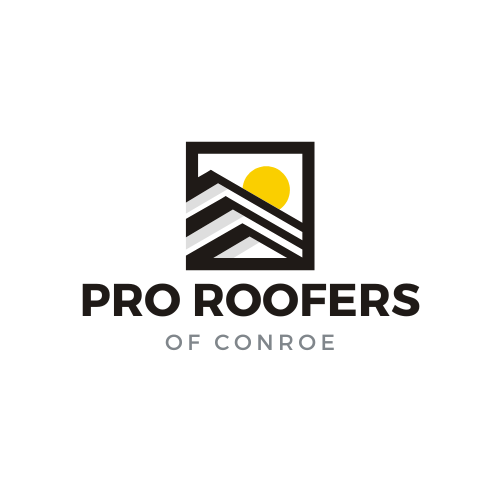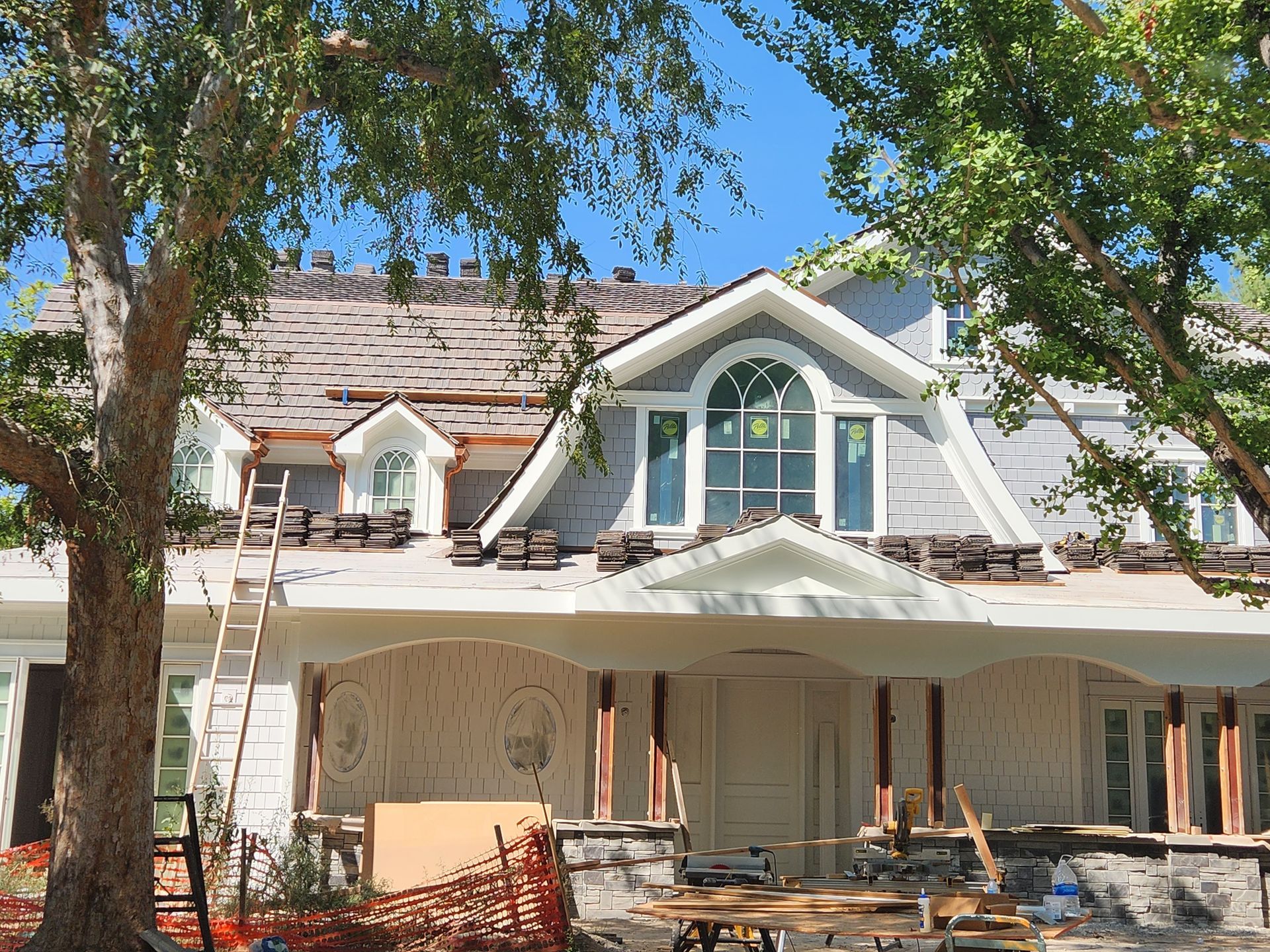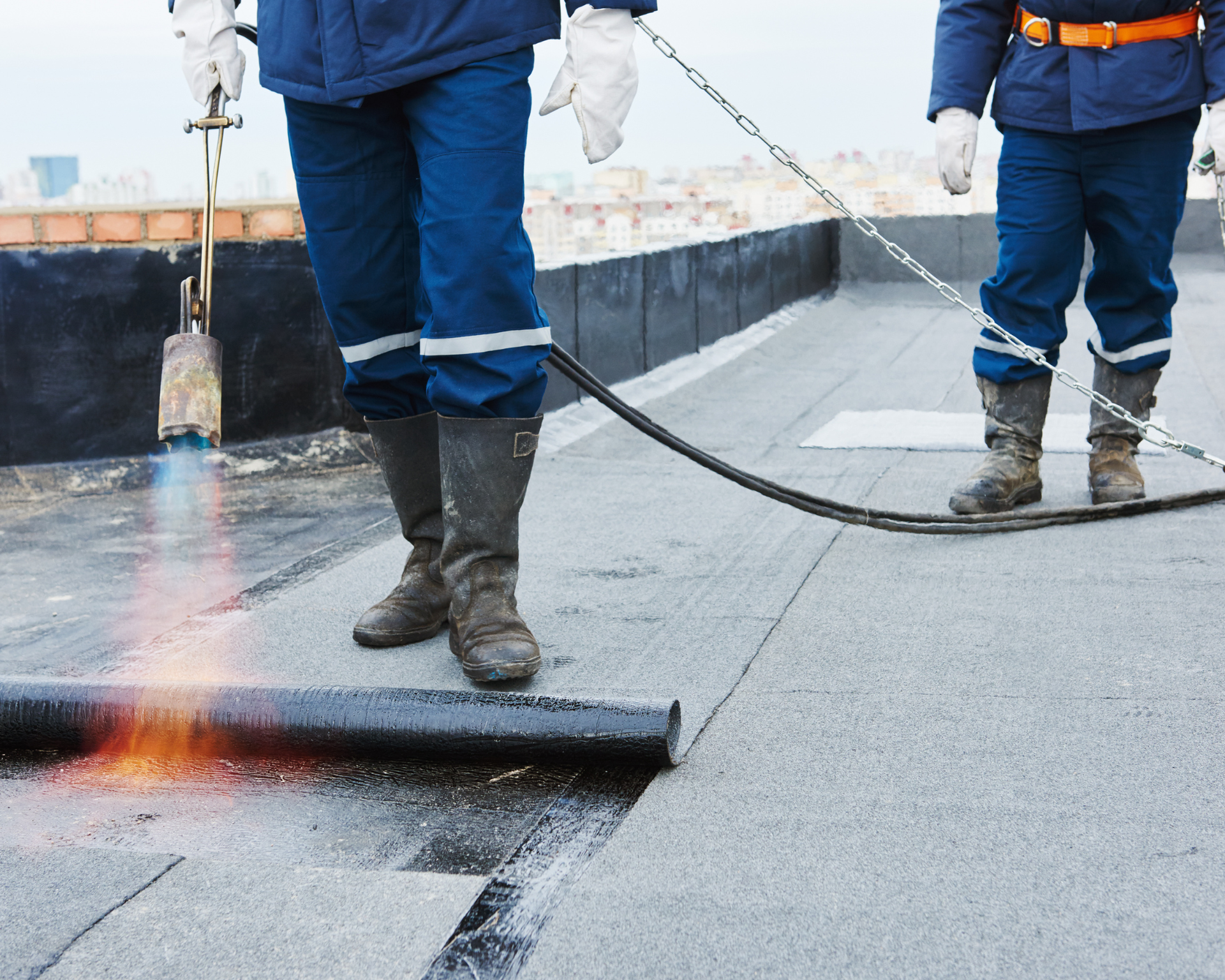Southeast TX Roofing Blog
A Guide to Large-Scale Building Roofing
Commercial roofing encompasses any roofing system installed on business properties, industrial facilities, and multi-unit residential buildings. These specialized roofing systems are engineered to protect large structures while meeting specific building codes, safety requirements, and performance standards for commercial applicationsWe frequently see commercial roofing on warehouses, office buildings, retail centers, and apartment complexes. The scale and complexity of these projects require different materials and installation methods compared to residential roofs
Professional commercial roofers use materials like TPO, EPDM rubber, built-up roofing, and modified bitumen to create durable, weather-resistant systems that can span thousands of square feet. These materials are selected based on the building's unique requirements for durability, energy efficiency, and cost-effectiveness.
Defining Commercial Roofing
Commercial roofing refers to the materials, systems, and installation methods used for non-residential buildings and structures. These roofing solutions must meet specific engineering requirements and safety standards for large-scale applications.
Differences Between Commercial and Residential Roofing
Commercial roofs typically cover much larger areas than residential roofs, often spanning thousands of square feet. They frequently feature flat or low-slope designs to accommodate HVAC systems and other equipment.
The materials used in commercial roofing include EPDM rubber, TPO, PVC membranes, and built-up roofing systems - options rarely seen in residential applications.
Commercial projects require specialized installation teams and heavy equipment due to their scale and complexity. These teams must be certified in specific commercial roofing systems.
Understanding Building Code Requirements
Commercial buildings must adhere to stricter building codes than residential structures. Load-bearing requirements account for heavy equipment, snow accumulation, and potential foot traffic.
Fire resistance ratings are more stringent for commercial roofs, especially in multi-story buildings. We must ensure materials meet specific flame spread and smoke development criteria.
Local regulations often mandate regular inspections and maintenance schedules for commercial roofs. Documentation of these inspections must be maintained for compliance.
Common Purposes of Commercial Roofs
Commercial roofs serve as platforms for essential building systems. They house HVAC units, satellite dishes, solar panels, and other mechanical equipment.
Many commercial roofs incorporate specialized drainage systems to handle large water volumes. These include internal drains, scuppers, and tapered insulation for proper water management.
Some commercial roofs function as usable spaces. Green roofs, rooftop gardens, and recreational areas require additional waterproofing and structural support systems.
Types of Commercial Roofing Systems
Commercial roofing incorporates several distinct systems that offer varying levels of durability, cost-effectiveness, and performance characteristics. Each system serves specific building requirements and environmental conditions.
Single-Ply Membrane Roofing
Single-ply membranes consist of flexible sheets made from synthetic materials like EPDM, TPO, or PVC. These materials provide excellent waterproofing and UV resistance.
EPDM (black rubber) membranes can last 20-30 years and withstand extreme temperature fluctuations. They're particularly resistant to ozone and UV radiation.
TPO membranes reflect sunlight effectively, reducing cooling costs. They combine the durability of EPDM with the heat-reflecting properties of PVC.
PVC roofing resists chemicals and fire while offering superior flexibility. It's ideal for restaurants and industrial facilities where grease and chemicals are present.
Built-Up Roofing (BUR)
Built-up roofing systems use multiple layers of bitumen and reinforcing fabrics. We call these layers "plies," which create a thick, long-lasting roof membrane.
The top layer typically includes gravel or mineral granules that protect against UV rays and physical damage. BUR systems can last 20-30 years with proper maintenance.
These systems excel in buildings with heavy roof traffic or equipment installations. Their multi-layer construction provides excellent protection against water and physical impacts.
Metal Roofing
Metal roofing systems use panels made from steel, aluminum, copper, or zinc. They offer exceptional durability with lifespans reaching 40-60 years.
Standing seam metal roofs feature raised interlocking seams that prevent water infiltration. These systems allow thermal movement without compromising waterproofing.
Metal roofs reflect solar radiation effectively, reducing cooling costs. They're recyclable and environmentally friendly, making them an excellent sustainable choice.
Modified Bitumen Roofing
Modified bitumen combines asphalt with plastic or rubber polymers, creating flexible, durable sheets. These systems typically include 2-3 layers for optimal protection.
The polymer modification improves the material's flexibility and strength in extreme temperatures. This enhancement prevents cracking in cold weather and softening in heat.
Installation methods include torch-applied, cold-applied adhesives, or self-adhering systems. The choice depends on building requirements and local regulations.
Materials Used in Commercial Roofing
Commercial roofs require durable, weather-resistant materials that can withstand harsh conditions while providing excellent protection. Modern roofing materials offer superior performance, energy efficiency, and longevity.
Thermoplastic Polyolefin (TPO)
TPO membranes feature a single-ply roofing system made from polypropylene and ethylene-propylene rubber. These white reflective membranes typically measure 45-80 mils in thickness.
The material resists UV radiation, chemicals, and bacterial growth while maintaining flexibility in extreme temperatures. TPO's white surface reflects sunlight, reducing cooling costs and energy consumption.
We find TPO particularly effective in harsh environments due to its strong heat-welded seams and resistance to punctures. The material requires minimal maintenance and can last 20-30 years when properly installed.
Ethylene Propylene Diene Monomer (EPDM)
EPDM consists of a synthetic rubber compound that creates a durable, waterproof barrier. This material comes in black or white sheets ranging from 45-90 mils thick.
EPDM's flexibility allows it to expand and contract with temperature changes without cracking or splitting. The material performs exceptionally well in extreme temperatures, from -40°F to 300°F.
Installation involves either mechanical fastening or full adhesion to the roof deck. EPDM roofs can last 25-35 years and resist damage from hail, wind, and UV exposure.
Polyvinyl Chloride (PVC)
PVC roofing membranes provide excellent chemical resistance and durability. These thermoplastic materials feature hot-air welded seams that create a permanent, watertight bond.
The material's high reflectivity helps reduce cooling costs, while its resistance to chemicals makes it ideal for restaurants and industrial facilities. PVC maintains its flexibility throughout its lifespan.
A properly installed PVC roof system can last 20-30 years. The material resists fire, punctures, and wind uplift while requiring minimal maintenance.
Commercial Roofing Installation Methods
Commercial roofing professionals employ three primary methods to secure roofing materials: mechanical attachment, full adhesion, and ballasting. Each technique serves specific building requirements and environmental conditions.
Mechanically Attached Systems
Mechanically attached systems use metal plates and screws to fasten the roofing membrane to the deck. These fasteners are placed along the seams of the membrane at specified intervals.
This method works particularly well for buildings in high-wind zones. The rows of fasteners create a grid pattern that distributes wind forces across the roof surface.
Installation costs remain lower compared to other methods since fewer materials and labor hours are needed. We recommend this system for metal and wood deck substrates.
Fully Adhered Systems
Fully adhered systems bond the entire roofing membrane to the substrate using specialized adhesives. The membrane attaches directly to the insulation or roof deck beneath it.
This technique provides excellent wind uplift resistance and creates a smooth, attractive appearance. We see superior performance in areas prone to severe weather conditions.
The installation process requires careful surface preparation and specific temperature ranges for proper adhesive curing. These systems excel on concrete decks and irregular roof shapes.
Ballasted Systems
Ballasted systems use weight to hold the roofing membrane in place. River rock or concrete pavers serve as ballast, typically weighing 10-12 pounds per square foot.
This method offers quick installation and lower initial costs. The ballast also provides UV protection and extends membrane life.
Weight considerations limit this approach to structures with adequate load-bearing capacity. We must carefully evaluate drainage patterns to prevent water accumulation around the ballast.
Key Features of Commercial Roofs
Commercial roofs incorporate specific design elements focused on durability, performance, and functionality. These roofs must withstand intense environmental stresses while protecting valuable business assets and operations.
Flat and Low-Slope Designs
Commercial roofs typically feature flat or low-slope configurations with pitches ranging from 1/4 inch to 2 inches per foot. This design maximizes usable interior space and provides convenient access for maintenance and equipment installation.
These roofs use specialized membranes like EPDM, TPO, or modified bitumen to ensure water resistance despite minimal slope. The flat surface creates an ideal platform for HVAC units, solar panels, and other building systems.
We see many businesses opt for white or reflective roof surfaces to reduce heat absorption and cooling costs. The extensive surface area requires proper structural support to handle equipment weight and potential snow loads.
Drainage Considerations
Commercial roofs employ strategic drainage systems to prevent water accumulation and structural damage. Interior drains, positioned at regular intervals, direct water through the building's plumbing system.
Scuppers and gutters serve as backup drainage methods, especially during heavy rainfall. Regular maintenance of these systems prevents clogs and ensures proper water flow.
Tapered insulation creates subtle slopes toward drainage points, eliminating standing water issues. Most commercial roofs include cricket systems behind equipment or at wall intersections to direct water flow effectively.
Insulation and Energy Efficiency
Commercial roofs utilize multi-layer insulation systems to maintain indoor temperatures and reduce energy costs. R-values typically range from R-20 to R-40, depending on climate zone and building requirements.
Modern insulation materials like polyisocyanurate and extruded polystyrene offer superior thermal resistance while minimizing thickness. Air barriers and vapor retarders work with insulation to prevent moisture buildup and maintain efficiency.
We recommend continuous insulation layers to eliminate thermal bridging through the roof assembly. Strategic placement of insulation above the roof deck protects the membrane and extends system longevity.
Typical Applications for Commercial Roofing
Commercial roofing systems serve diverse building types with specific requirements for durability, weather protection, and structural support. Different commercial buildings require specialized roofing solutions based on their unique functions and architectural designs.
Industrial Warehouses
Industrial warehouses demand robust roofing systems that can withstand heavy equipment vibrations and protect valuable inventory. These buildings often feature flat or low-slope roofs with large surface areas.
Metal roofing systems provide excellent durability and low maintenance requirements for warehouse applications. We commonly install EPDM or TPO membranes for superior waterproofing and UV resistance.
Built-up roofing (BUR) systems work well for warehouses requiring enhanced impact resistance from falling debris or foot traffic during maintenance.
Office Buildings
Office buildings need roofing solutions that combine energy efficiency with aesthetic appeal. Modern office structures frequently incorporate green roofing systems to reduce heating and cooling costs.
Professional buildings benefit from reflective roof coatings that minimize heat absorption. We install white TPO or PVC membranes to achieve optimal energy performance.
Many office buildings feature architectural elements like skylights and rooftop HVAC units, requiring careful detailing around penetrations.
Retail Centers
Retail centers require roofing systems that protect merchandise while maintaining an attractive appearance. These buildings often have complex roof designs with multiple levels and sections.
Shopping centers benefit from durable single-ply membranes that resist damage from restaurant exhaust and chemical exposure. Modified bitumen roofing provides excellent protection for high-traffic retail environments.
Store owners prefer roofing materials that minimize disruption during installation or repairs, making quick-install systems particularly valuable for retail applications.
Maintenance and Lifespan of Commercial Roofs
Commercial roofs require consistent upkeep to maintain their protective qualities and extend their service life. Regular maintenance, timely repairs, and understanding environmental impacts play crucial roles in maximizing roof performance.
Routine Inspections
Professional roof inspections should occur twice yearly - typically in spring and fall. We recommend scheduling additional checks after severe storms or extreme weather events.
A thorough inspection includes examining seams, flashings, drainage systems, and the roof surface for signs of damage or deterioration. Documentation through photos and detailed reports helps track changes over time.
Key inspection points include:
- Membrane conditions and seam integrity
- Drainage pathway blockages
- Flashing and edge metal security
- Signs of water infiltration
- HVAC unit attachments and seals
Repair and Restoration Options
Small repairs addressed promptly can prevent costly full replacements. Common repair methods include patching tears, resealing joints, and fixing flashing details.
Restoration options for aging roofs:
- Roof coatings: Extend life by 10-15 years
- Partial replacement: Replace damaged sections
- Reinforcement: Add support to weakened areas
- Surface treatments: Enhance UV protection
Professional contractors can evaluate whether repair or replacement provides the best long-term value.
Factors Affecting Durability
The local climate significantly impacts roof longevity. UV exposure, temperature fluctuations, and precipitation patterns affect different roofing materials differently.
Expected lifespans vary by material type:
- Built-up roofing: 20-30 years
- EPDM: 20-35 years
- TPO: 20-30 years
- PVC: 20-30 years
- Metal roofing: 30-45 years
Proper installation quality and regular maintenance can extend these timeframes by 25-50%.
Installation methods, foot traffic patterns, and rooftop equipment placement also influence durability. We recommend designated walkways and equipment pads to protect the roof surface.
Regulations and Industry Standards
Commercial roofing projects must adhere to strict regulatory requirements and meet specific industry standards to ensure safety, quality, and longevity.
Occupational Safety and Health Administration (OSHA) Guidelines
OSHA mandates comprehensive safety protocols for commercial roofing operations. Workers must use fall protection equipment when working at heights above 6 feet.
Personal Protective Equipment (PPE) requirements include hard hats, non-slip footwear, and safety harnesses. Guardrails or warning lines are mandatory around roof edges.
Job site inspections must occur regularly to identify potential hazards. Safety training documentation needs to be maintained for all workers on commercial roofing projects.
Warranty and Insurance Requirements
Commercial roofing contractors must carry specific insurance coverage types, including general liability and workers' compensation. Most states require minimum coverage amounts ranging from $500,000 to $2 million.
Manufacturer warranties typically span 10-30 years for commercial roofing systems. These warranties often require certified contractor installation and regular maintenance inspections.
Insurance policies may mandate specific installation methods and materials to maintain coverage. Documentation of proper installation and maintenance procedures is essential for warranty claims.
Emerging Trends in Commercial Roofing
Modern commercial roofing practices focus on sustainability and energy efficiency, incorporating innovative technologies and eco-friendly materials to meet evolving building standards.
Green Roofing Solutions
Living roofs represent a significant advancement in sustainable commercial roofing. These systems feature layers of vegetation planted over waterproof membranes, providing natural insulation and stormwater management.
Green roofs reduce heating and cooling costs by 25-50% while extending roof life expectancy to 40+ years. Many cities now offer tax incentives for businesses that install these systems.
Popular vegetation choices include drought-resistant sedum and native plant species that require minimal maintenance. Modern green roof installations often incorporate advanced drainage systems and lightweight growing mediums.
Cool Roof Technology
Cool roofs use highly reflective materials and coatings to minimize heat absorption. White or light-colored materials can reflect up to 80% of sunlight, compared to 20% for traditional dark roofs.
These systems typically use specialized membranes:
- TPO (Thermoplastic Polyolefin)
- PVC (Polyvinyl Chloride)
- Modified bitumen with reflective granules
Energy savings from cool roofs range from 15-35% in commercial buildings. New developments include self-cleaning surfaces and smart materials that adjust their reflectivity based on temperature.
Recent innovations feature heat-responsive polymers that automatically increase solar reflection during summer months.


